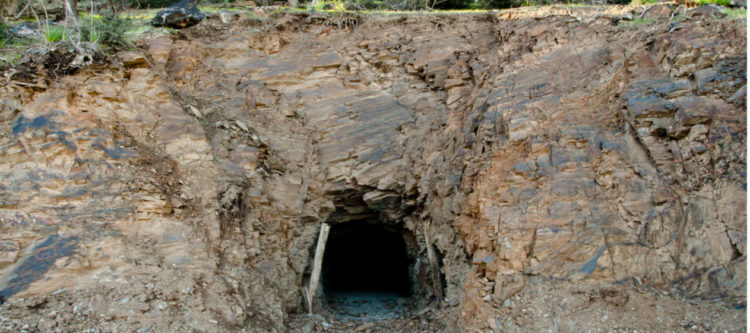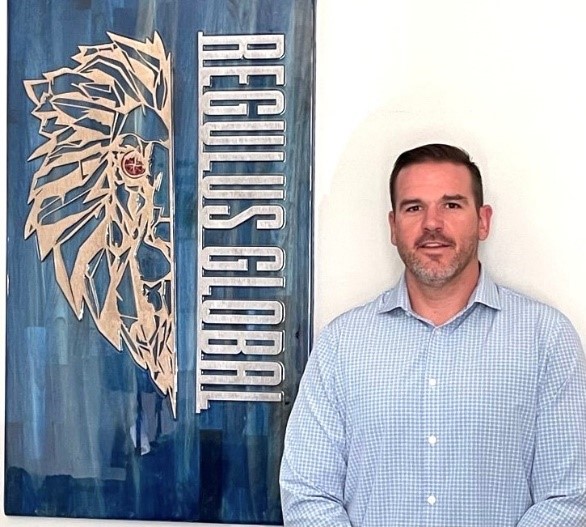Off-grid or underground – Regulus Global on meeting the communications needs of tactical operators

As modernization and digital transformation initiatives continue to take hold across the federal government, the need for connectivity and critical communications in the field only increases.
To help ensure that warfighters, tactical operators, and first responders operating in off-grid locations can stay connected, government, military, commercial and nonprofit organizations turn to partners that can help identify their communications requirements in the field, and deliver end-to-end solutions that can deliver the capabilities and systems they need to do their job.
One of these partners is Regulus Global. The company, which is headquartered in Virginia Beach, VA, specializes in enabling the capabilities of humanitarian, medical, defense, and emergency response organizations and working to give them the tools they need to accomplish their important missions.
To better understand the communications challenges facing these organizations, and to get insight into some of the advanced technologies that are being implemented in the field, we recently sat down with Regulus Global’s Director of Business Development, Patrick Becker.
Here is what he had to say:
 The Last Mile (TLM): Can you tell our readers a little bit about Regulus Global? What does the company do? How did it get its start?
The Last Mile (TLM): Can you tell our readers a little bit about Regulus Global? What does the company do? How did it get its start?
Patrick Becker: Regulus Global is a leader in enabling capabilities and innovative systems design, development, and execution specializing in the humanitarian, commercial medical, national security, and defense industries. We work to understand our customers’ mission, analyze their requirements, and deliver the emerging technologies, equipment, and scalability to meet their critical needs.
The company was established in 2012 and got its start in the international defense market as the exclusive international distributor for several industry-leading equipment manufacturers in Europe and the Middle East. This business model helped us rapidly expand our global footprint and eventually led to much larger-scale opportunities and the ability to integrate products spanning multiple product categories.
Today, Regulus Global operates and supports customer requirements in more than 70 countries.
TLM: Regulus Global claims that its methodology is to, “take the risk out of the mission.” What role do communications and situational awareness play in eliminating risk from the mission? Why are they essential for military, law enforcement, and emergency response missions?
Patrick Becker: There is no single capability that completely eliminates risk from austere humanitarian or military combat operations; the environmental and adversary factors present ensure that risk is a constant in most of the situations our customers operate in. However, the ability to communicate clearly and concisely is extremely important to mitigate risk in any operation, whether that be military, law enforcement, or emergency response teams.
Communications as the third “C” in C5ISR, enables the first two, command and control, and facilitates the integration of the other two, computers and combat systems. As communication technologies advance, the RF section of the EM spectrum becomes more dense and overpopulated. By looking at new and innovative technology that can coexist inside that space and complement traditional RF communication, we can offer capability enhancements to our customer base that gives them a real-world advantage.
Communications, as a backbone, enables instructions to be passed, responses to the recipient, analysis, and timely situational awareness – shared across the group in an efficient and recognizable format. Rapid, accurate dissemination of information and instruction speeds decision making and reaction times, feeding the “Observe, Orient, Decide, Act,” (OODA) loop process.
Simply put, establishing and maintaining communication in conjunction with situational awareness allows the OODA loop to function faster than the adversary or changing ground conditions. This loop, in turn, reduces risk by retaining the initiative and dictating the pace and nature of the actions a force wishes to affect. This is the greatest single factor in determining a mission’s success or failure.
TLM: In many of the places where Regulus customers operate, terrestrial communications networks can be spotty – either they’re unavailable, insecure, or unreliable. How does this create challenges for your customers? How has Regulus helped its customers address these challenges in the past?
Patrick Becker: The challenges to communication have become more complex with the increased reliance on digital traffic in addition to – or instead of – voice. Platform operating data, situational awareness systems, target tracks, fire control, and electronic signals intelligence (ELINT) systems are all seeking bandwidth from a finite spectrum.
Military HF, VHF, and UHF bands can quickly become saturated, and the theoretical data throughput of even the most advanced military radios in those bands are limited to 1.5mps. Advances in waveforms and error correction have advanced significantly, but the spectrum also must contend with the threat of radio controlled improvised explosive devices (RCIED) which have become prolific in the asymmetric warfare that most of our customers have grown to face.
Line of Sight (LOS) communications can no longer sustain the optimal demands the data requires. Beyond Line of Sight (BLOS), which is mostly SATCOM, also cannot meet the demand; and for many of our customers, the costs of leasing SATCOM channels make its use for routine operations unaffordable.
“…the ability to communicate clearly and concisely is extremely important to mitigate risk in any operation, whether that be military, law enforcement, or emergency response teams.” – Patrick Becker
Regulus has begun to challenge assumptions to find more available bandwidth for our customers – sustaining the tempo and volume of their data needs in austere environments. By taking a holistic view of the spectrum and moving different system or functional demands to other bearers, perhaps in commercial or civilian bands, allows a multi-layered approach that can handle that demand.
Mission-critical immediate combat awareness and C2 can remain in the military frequencies utilizing the high-performing and robust waveforms, where other parts of the recognized ground picture (RGP) and supporting data paths can exist on less robust commercial solutions, accepting that at times they may be inaccessible due to countermeasures or other specific threats.
By treating the wider RF spectrum as the pipeline, however, and with multi-layered systems in many cases, even with ECM operations, we can build a better, more resilient overall system architecture.
TLM: Within these off-grid locations and environments, operators often have to conduct missions and work in scenarios that create additional communications challenges – scenarios and missions underground, or indoors where comms and systems like GPS may not work. Are these scenarios common for operators? How has Regulus worked with its customers to enable comms in these scenarios?
Patrick Becker: Communications in a dense indoor, urban, and/or underground environment presents a completely different RF profile compared to the plains or deserts where conventional operations have occurred previously. For special forces, these system challenges can be addressed with long loiter overhead rebroadcasting of communications, but the vulnerability and relative costs restrict this to deliberate special operations for relatively short durations.
For most scenarios in this area, the rebroadcast of RF signals – including rebroadcast of GPS – can be achieved in a MANET based communications architecture, where each radio has LOS to another in a self-forming mesh network. This is especially useful for subterranean applications, where even deep underground lead elements can transmit and receive actionable data throughout the network. The challenges, however, of a MANET network are the increased power demands and logistic support considerations in terms of the battery ecosystem and charging requirements to sustain medium-to-long term duration tasks.
The RF dead spots often encountered in dense environments can also impact secure communications and restrict hardened RF communications, as timing on radio can be affected by the loss of the GPS timing feed. There are waveforms available that try to mitigate these challenges and, as more radios become waveform agnostic, the system architecture will also evolve.
TLM: Regulus recently worked with some government organizations in Central and Latin America to test and analyze goTenna Pro X mesh network solutions. How did mobile mesh networking perform in these tests? What did the technology enable from a capability standpoint that was previously unavailable to those organizations?
Patrick Becker: Our demo was with a highly trained counter-terrorism unit. Knowing the complexities of the client’s mission, we worked with them to push the level of the Pro X device capabilities to simulate a comparable operational engagement.
“…establishing and maintaining communication in conjunction with situational awareness allows the OODA loop to function faster than the adversary or changing ground conditions. This loop, in turn, reduces risk…” – Patrick Becker
At one point, the client placed a team member in a tunnel – which, itself, was under a thick canopy – and used the Pro X device and goTenna Native application to track and communicate with separate mobile units over 2.3 kilometers away.
This demo was able to perfectly showcase the ability to provide ground commanders with remote situational awareness, in a realistic, challenging RF environment.
TLM: What different use cases could you envision for mobile mesh networking for Regulus Global customers? What different types of missions could it support? What capabilities could it deliver for them?
Patrick Becker: Mobile mesh networking in RF bands, not subject to ECM overlap, is applicable to many of our global customers. It is especially critical for the transfer of critical tactical information, real-time drone feed footage and intel, voice communications, and secure digital messaging in communication-denied and -challenged environments.
Mobile mesh networking is relevant in supporting a variety of missions ranging from humanitarian and disaster relief efforts, search and rescue missions, tactical operations, border security, and wildland fire suppression.
Mobile mesh can help maintain communication links between platform, and ground formations in near real-time. It can help re-establish communications where the infrastructure has been completely wiped out by natural disasters or in environments where LOS communication is unworkable. The technology can create an effective communication network while securing the border and providing real-time situational awareness for effective tactical planning. It can also enable search and rescue missions by providing near real-time location and mapping capabilities
Because Regulus works to understand our customers’ unique missions, clear communications that include emerging technologies, equipment, and scalability is critical to rapidly respond across any environmental condition – whether it’s urban, subterranean, remote, or wiped out completely due to a natural disaster.
To learn more about Regulus Global, click HERE to visit them online.







No Comment